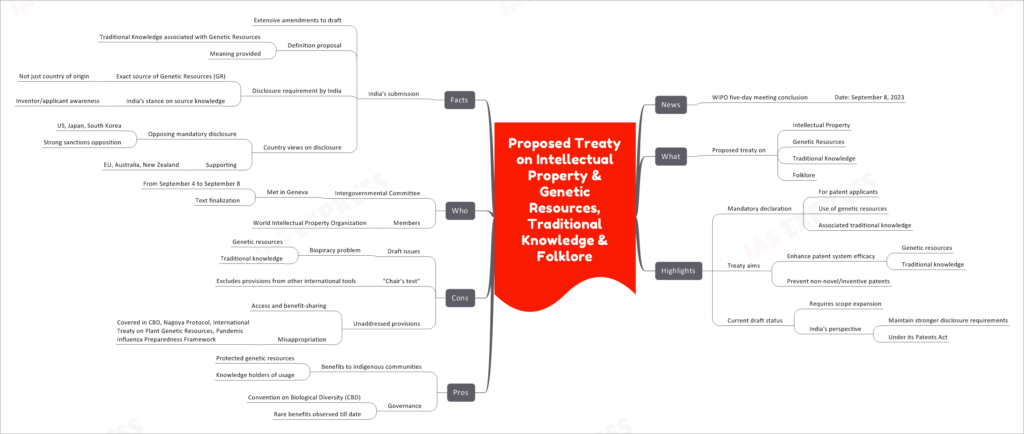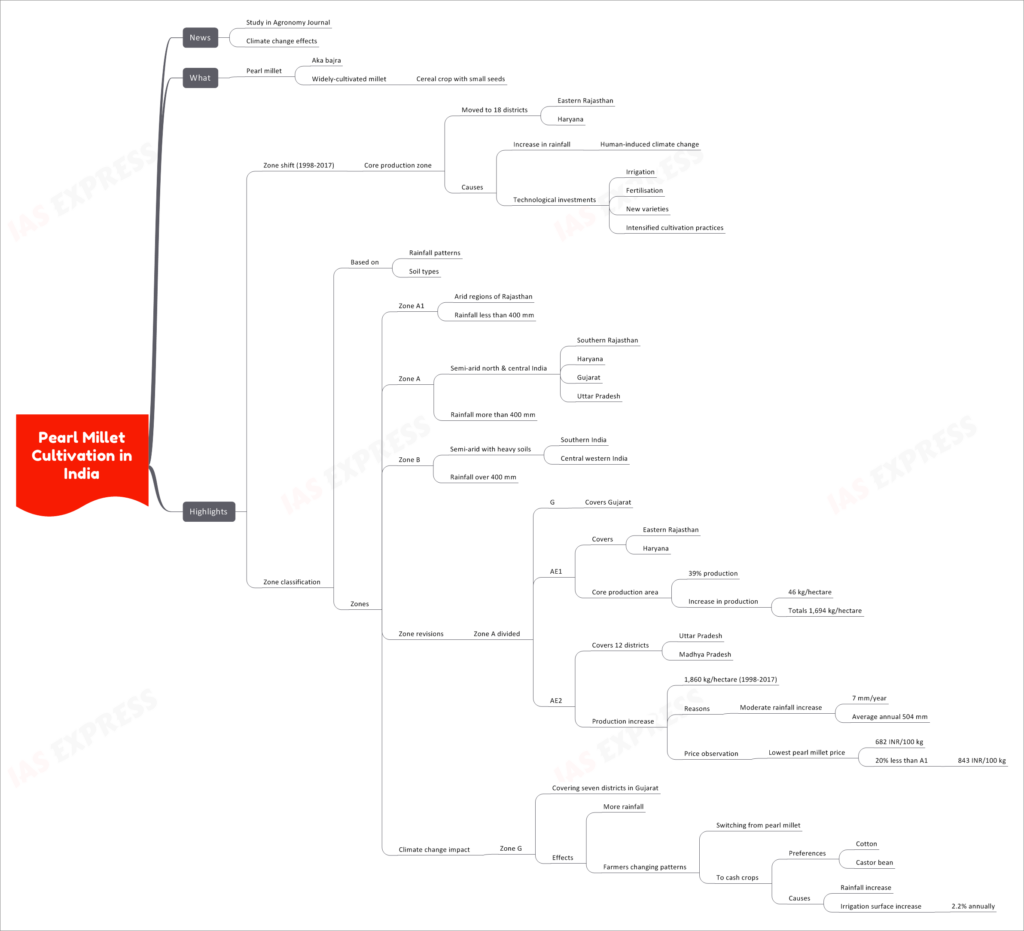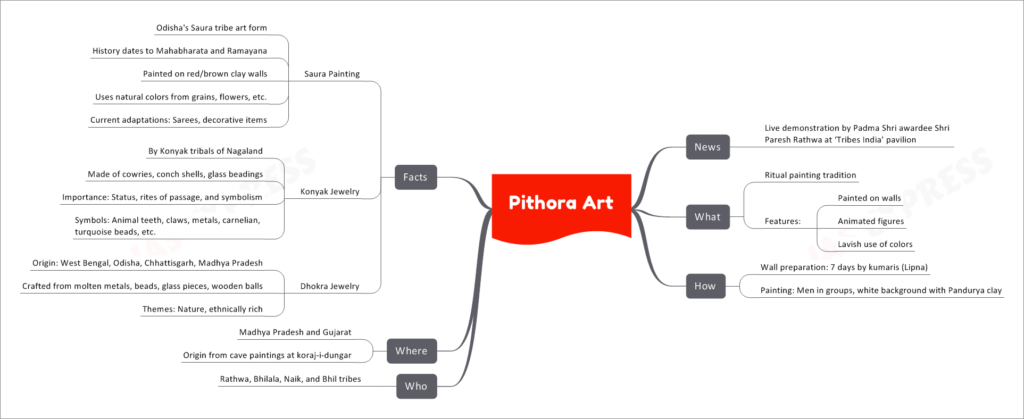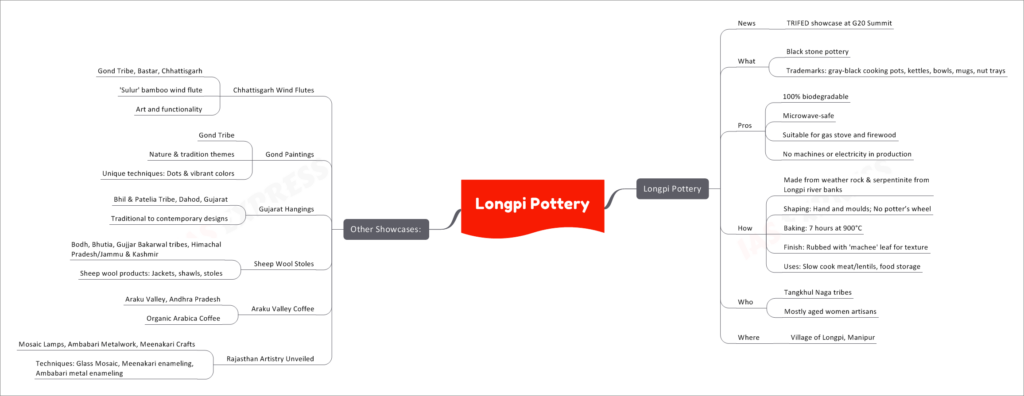[Newsbits] 09.09.2023

Proposed Treaty on Intellectual Property and Genetic Resources, Traditional Knowledge and Folklore
- WIPO Five-Day Meeting Conclusion
- Date: September 8, 2023
What is the Proposed Treaty?
The proposed treaty addresses critical issues related to Intellectual Property (IP), Genetic Resources (GR), Traditional Knowledge (TK), and Folklore.
Highlights
Mandatory Declaration
- For Patent Applicants: The treaty mandates patent applicants to declare the use of genetic resources and associated traditional knowledge.
Treaty Aims
- Enhance Patent System Efficacy: By regulating genetic resources and traditional knowledge, the treaty seeks to improve the efficacy of the patent system.
- Prevent Non-Novel/Inventive Patents: It aims to prevent the granting of patents for inventions that lack novelty or inventiveness.
Current Draft Status
- Scope Expansion Required: The current draft necessitates expansion to address various aspects.
- India's Perspective: India advocates for maintaining stronger disclosure requirements under its Patents Act.
Pros
Benefits to Indigenous Communities
- Protected Genetic Resources: Indigenous communities will benefit from the protection of their genetic resources.
- Knowledge Holders of Usage: Traditional knowledge holders will gain recognition and protection for their contributions.
Governance
- Convention on Biological Diversity (CBD): The treaty aligns with CBD objectives.
- Rare Benefits Observed Till Date: It builds upon the rare benefits observed through previous agreements.
Cons
Draft Issues
- Biopiracy Problem: The draft needs to address the issue of biopiracy concerning genetic resources and traditional knowledge.
"Chair’s Text"
- Excludes Provisions from Other International Tools: Some provisions from other international agreements are excluded from the "Chair’s Text."
Unaddressed Provisions
- Access and Benefit-Sharing: Certain provisions related to access and benefit-sharing are not adequately addressed.
- Misappropriation: Issues of misappropriation are covered in various agreements such as CBD, Nagoya Protocol, International Treaty on Plant Genetic Resources, and the Pandemic Influenza Preparedness Framework.
Who is Involved?
Intergovernmental Committee
- Met in Geneva: The committee convened in Geneva from September 4 to September 8 for text finalization.
Members
- World Intellectual Property Organization (WIPO): WIPO plays a central role in shaping the treaty.
Facts
- India's Submission: India has submitted extensive amendments to the draft, proposing a clear definition of "Traditional Knowledge associated with Genetic Resources" and emphasizing the need for disclosure regarding the exact source of genetic resources (GR) beyond just the country of origin.
- India's Stance on Source Knowledge: India advocates for inventor/applicant awareness of the source knowledge.
- Country Views on Disclosure:
- Opposing Mandatory Disclosure: Countries such as the United States, Japan, and South Korea oppose mandatory disclosure and strongly oppose sanctions.
- Supporting Mandatory Disclosure: The European Union, Australia, and New Zealand support mandatory disclosure requirements.
The proposed treaty represents a significant step in addressing the complex issues surrounding intellectual property, genetic resources, traditional knowledge, and folklore. It strives to strike a balance between protecting indigenous communities and fostering innovation while still facing challenges related to biopiracy and international alignment. The ongoing discussions and negotiations will determine the final shape of this important international agreement.
Pearl Millet Cultivation in India
Recent studies published in the Agronomy Journal have shed light on the impact of climate change on pearl millet cultivation in India. This widely-cultivated cereal crop, also known as bajra, has seen significant changes in its core production zones and practices due to shifts in climate patterns and technological advancements.
News
The findings discussed in this article are based on a comprehensive study conducted in India, highlighting the evolving landscape of pearl millet cultivation. These changes have been attributed to both human-induced climate change and advancements in agricultural technology.
What is Pearl Millet?
Pearl millet, commonly known as bajra, is a cereal crop with small seeds that has been a staple in Indian agriculture for centuries. It is known for its resilience and adaptability to arid and semi-arid conditions, making it a crucial crop for food security in many regions.
Highlights
The study conducted between 1998 and 2017 reveals some significant shifts in the core production zones of pearl millet in India. Here are the key highlights:
Zone Shift (1998-2017)
- Core Production Zone: The traditional core production zone for pearl millet has moved to encompass 18 districts, including Eastern Rajasthan and Haryana.
Causes
The shift in the core production zone can be attributed to two primary factors:
- Increase in Rainfall: Human-induced climate change has led to an increase in rainfall in these regions.
- Technological Investments: Advancements in irrigation, fertilization, the introduction of new pearl millet varieties, and intensified cultivation practices have played a crucial role in expanding the production zone.
Zone Classification
The zones are classified based on rainfall patterns and soil types:
- Zones A1:
- Located in the arid regions of Rajasthan.
- Experiences rainfall less than 400 mm.
- Zones A:
- Encompasses semi-arid north and central India, including Southern Rajasthan, Haryana, Gujarat, and Uttar Pradesh.
- Receives rainfall more than 400 mm.
- Zones B:
- Semi-arid regions with heavy soils, including Southern India and Central Western India.
- Experiences rainfall over 400 mm.
Zone Revisions
- Zone A Divided:
- Zone G: Covering Gujarat.
- AE1: Encompassing Eastern Rajasthan and Haryana.
- Core production area responsible for 39% of total production.
- Experienced a substantial increase in production, reaching 46 kg/hectare, totaling 1,694 kg/hectare.
- AE2: Covers 12 districts, including Uttar Pradesh and Madhya Pradesh.
- Saw a production increase of 1,860 kg/hectare between 1998 and 2017.
- This increase is attributed to moderate rainfall increases, averaging 7 mm/year, with an average annual rainfall of 504 mm.
Price Observation
- Lowest Pearl Millet Price: It was observed that pearl millet prices in Zone AE2 were 20% lower than in Zone A1. The prices stood at 682 INR/100 kg compared to 843 INR/100 kg in Zone A1.
Climate Change Impact
Zone G
- This zone, covering seven districts in Gujarat, has experienced a significant impact from climate change, primarily in the form of increased rainfall.
Effects
- More Rainfall: The increased rainfall has forced farmers to change their cropping patterns.
- Farmers' Preferences: Many farmers have shifted from pearl millet cultivation to cash crops like cotton and castor bean.
Causes
- Rainfall Increase: The primary reason for this shift is the substantial increase in rainfall.
- Irrigation Surface Increase: An annual increase of 2.2% in irrigation surface has also contributed to this change.
Varuna 2023
- Phase II of Varuna 2023 Conducted
What is Varuna 2023?
Varuna 2023 marks the 21st edition of the India-France bilateral naval exercise, a significant maritime collaboration between the two nations.
How is Varuna 2023 Conducted?
Varuna 2023 involves a series of joint naval operations, including:
- Underway Replenishment: Naval units engage in the replenishment of essential supplies while at sea, a vital skill for long deployments.
- Tactical Manoeuvres: The exercise includes tactical manoeuvres that test the capabilities of participating naval forces.
Aim of Varuna 2023
The primary objectives of Varuna 2023 are:
- Enhance War-fighting Skills: The exercise aims to improve the war-fighting capabilities of both the Indian and French naval forces.
- Improve Interoperability: It seeks to enhance interoperability between the two navies, allowing them to work seamlessly together in joint operations.
- Promote Regional Peace and Stability: Varuna contributes to the promotion of regional peace and stability by fostering closer ties between India and France in the maritime domain.
Who Participates in Varuna 2023?
The exercise involves the participation of:
- Indian Navy: The Indian Navy plays a significant role in Varuna 2023, contributing its assets and personnel.
- French Navy: The French Navy actively collaborates with the Indian Navy during the exercise.
Units Involved in Varuna 2023
The participating units include:
- Guided Missile Frigates: These naval vessels are equipped with guided missiles and play a crucial role in modern naval warfare.
- Tanker: The tanker provides the necessary logistics support for naval operations, including refueling at sea.
- Maritime Patrol Aircraft: These aircraft are used for surveillance, reconnaissance, and anti-submarine warfare.
- Integral Helicopters: Helicopters stationed on naval vessels enhance their anti-submarine, anti-surface, and search-and-rescue capabilities.
Where and When?
- Phase I: The initial phase of Varuna 2023 took place on the Western Seaboard of India, where naval forces practiced various exercises and drills.
- Phase II: The second phase of the exercise unfolded in the Arabian Sea, expanding the scope of joint naval operations.
- Historical Background: Varuna, which started in 1993, was renamed as such in 2001, underscoring the long-standing maritime partnership between India and France.
Varuna 2023 is not just an exercise in naval prowess but also a testament to the strong diplomatic and strategic ties between India and France. It serves as a platform for mutual learning, cooperation, and the strengthening of maritime security in the region.
Pithora Art
- Live Demonstration by Padma Shri Awardee Shri Paresh Rathwa at 'Tribes India' Pavilion
What is Pithora Art?
Pithora Art is a ritualistic painting tradition practiced by various tribal communities in the states of Madhya Pradesh and Gujarat, India. It is characterized by its unique features:
- Painted on Walls: Pithora paintings are typically created on the walls of homes and community spaces.
- Animated Figures: These paintings feature animated and often mythical figures, reflecting tribal folklore and traditions.
- Lavish Use of Colors: Pithora art is known for its vibrant and lavish use of colors, creating visually striking compositions.
How is Pithora Art Created?
The creation of Pithora art involves several steps:
- Wall Preparation: The walls are meticulously prepared for painting, a process that takes up to 7 days and is carried out by kumaris or young girls known as Lipna.
- Painting: The actual painting is done by men in groups. A white background is created using Pandurya clay, which provides a base for the colorful artwork.
Who Practices Pithora Art?
Pithora Art is practiced by several tribal communities, including the Rathwa, Bhilala, Naik, and Bhil tribes in Madhya Pradesh and Gujarat.
Where Can Pithora Art Be Found?
This unique tribal art form is primarily found in the tribal regions of Madhya Pradesh and Gujarat.
Facts About Pithora Art
Pithora Art traces its origin to cave paintings at Koraj-i-Dungar, reflecting its ancient roots and cultural significance among tribal communities.
Other Indigenous Art Forms and Crafts
Saura Painting
- Origin: Saura Painting is an art form belonging to Odisha's Saura tribe, with historical roots dating back to the Mahabharata and Ramayana eras.
- Medium: These paintings are created on red or brown clay walls.
- Natural Colors: Saura paintings make use of natural colors derived from grains, flowers, and other organic sources.
- Contemporary Adaptations: Today, Saura art is also adapted to items like sarees and decorative pieces.
Konyak Jewelry
- Crafted by: Konyak tribals of Nagaland, this jewelry is made from a variety of materials, including cowries, conch shells, glass beadings, and more.
- Importance: Konyak jewelry holds great significance in terms of status, rites of passage, and symbolism.
- Symbols: It often features symbols like animal teeth, claws, metals, carnelian, turquoise beads, and more, each carrying cultural and traditional meanings.
Dhokra Jewelry
- Origin: Dhokra jewelry hails from West Bengal, Odisha, Chhattisgarh, and Madhya Pradesh.
- Materials: Crafted from molten metals, beads, glass pieces, wooden balls, and other materials.
- Themes: Dhokra jewelry often reflects themes inspired by nature and the ethnically rich traditions of the regions where it is produced.
These indigenous art forms and crafts, including Pithora Art, Saura Painting, Konyak Jewelry, and Dhokra Jewelry, serve as vibrant expressions of India's rich tribal heritage and cultural diversity. They not only preserve traditional knowledge but also provide a source of livelihood and cultural identity for tribal communities.
Longpi Pottery
- TRIFED Showcase at G20 Summit
What is Longpi Pottery?
Longpi Pottery, also known as black stone pottery, is a traditional art form that hails from the Tangkhul Naga tribes of the Longpi village in Manipur, India. It is characterized by its trademark gray-black cooking pots, kettles, bowls, mugs, and nut trays.
Pros of Longpi Pottery
Longpi Pottery boasts several remarkable features that set it apart:
- 100% Biodegradable: Longpi pottery is eco-friendly and biodegradable, making it an environmentally sustainable choice.
- Microwave-Safe: These pottery items are microwave-safe, adding convenience to modern kitchens.
- Suitable for Gas Stove and Firewood: Longpi pottery can be used on both gas stoves and open fires, making it versatile for various cooking methods.
- Handcrafted without Machines or Electricity: The production of Longpi pottery involves no machines or electricity, preserving traditional craftsmanship.
How is Longpi Pottery Made?
The creation of Longpi pottery is a meticulous process:
- Materials: It is made from weather rock and serpentinite sourced from the Longpi river banks.
- Shaping: Artisans shape the pottery using hand techniques and molds, without the use of a potter's wheel.
- Baking: The pottery is baked for approximately 7 hours at temperatures reaching 900°C.
- Finish: After baking, the pottery is rubbed with 'machee' leaf to give it a distinctive texture.
Uses of Longpi Pottery
Longpi pottery finds applications in various culinary practices:
- Slow Cook Meat/Lentils: These pottery items are ideal for slow-cooking meat and lentils, imparting unique flavors to dishes.
- Food Storage: Longpi pottery is also used for food storage due to its natural properties.
Who are the Artisans?
Longpi pottery is predominantly crafted by aged women artisans from the Tangkhul Naga tribes, who have inherited and passed down this traditional art form through generations.
Where is Longpi Pottery Produced?
Longpi pottery is primarily produced in the village of Longpi, located in the state of Manipur, India.
Other Showcases at TRIFED
In addition to Longpi pottery, TRIFED also showcases various other indigenous art forms and products from across India at the G20 Summit:
- Chhattisgarh Wind Flutes: Presented by the Gond Tribe in Bastar, Chhattisgarh, these 'Sulur' bamboo wind flutes blend artistry with functionality.
- Gond Paintings: Crafted by the Gond Tribe, these paintings depict nature and traditional themes using unique techniques such as dots and vibrant colors.
- Gujarat Hangings: Presented by the Bhil and Patelia Tribe in Dahod, Gujarat, these hangings feature traditional to contemporary designs.
- Sheep Wool Stoles: Created by the Bodh, Bhutia, and Gujjar Bakarwal tribes in Himachal Pradesh and Jammu & Kashmir, these products include jackets, shawls, and stoles made from sheep wool.
- Araku Valley Coffee: Hailing from Araku Valley in Andhra Pradesh, this coffee is organically grown Arabica coffee.
- Rajasthan Artistry Unveiled: This showcase features mosaic lamps, Ambabari metalwork, and Meenakari crafts from Rajasthan, highlighting techniques like glass mosaic, Meenakari enameling, and Ambabari metal enameling.
Thiruvathira Njattuvela
- Kerala Paddy Farmers Affected by Rainfall Deficiency
What is Thiruvathira Njattuvela?
Thiruvathira Njattuvela is a significant period in the Malayalam calendar, holding special importance in the state of Kerala, India.
Origin of the Name
- From "Njazhar Vela": The name "Njattuvela" is derived from the Malayalam words "Njazhar vela," which translates to the "hour" or "hora of the Sun."
- Meaning: It signifies the transition from day to night.
Weather During Thiruvathira Njattuvela
During Thiruvathira Njattuvela, Kerala experiences a unique combination of weather conditions:
- Intermittent Rains: The period is characterized by intermittent rainfall.
- Harsh Sun: It is also marked by the presence of a harsh sun.
Significance of Thiruvathira Njattuvela
Known for Continuous Moderate Rains
Thiruvathira Njattuvela is traditionally known for providing continuous, moderate rains to the region.
Importance for Agriculture
This period holds immense importance for agriculture in Kerala, as it serves as the ideal initiation time for various traditional planting activities.
Traditional Planting of Black Pepper
One of the key agricultural practices associated with Thiruvathira Njattuvela is the traditional planting of black pepper, a vital spice in Kerala's cuisine.
When Does Thiruvathira Njattuvela Occur?
Thiruvathira Njattuvela typically spans from June 21 to July 4, aligning with the monsoon season in Kerala.
Facts about Thiruvathira Njattuvela
King Zamorin of Kozhikode Quote
The historical significance of Thiruvathira Njattuvela is reflected in a quote by the King Zamorin of Kozhikode, emphasizing the value of this period for agriculture.
Ayurvedic Vaidyars' Practice
In Ayurveda, traditional practitioners known as Vaidyars utilize rainwater collected during Thiruvathira Njattuvela for preparing medicinal concoctions and herbal medicines.
Collecting Thiruvathira Njattuvela Rainwater
The rainwater collected during this period is believed to have special medicinal properties.
Other Rainy Periods
Besides Thiruvathira Njattuvela, Kerala's agricultural calendar also recognizes other rainy periods, including:
- Makayiram Njattuvela
- Punartham Njattuvela
These periods play unique roles in the agricultural practices and traditions of Kerala.
Thiruvathira Njattuvela stands as a testament to the intricate relationship between Kerala's culture, climate, and agriculture. It continues to be a crucial time for farmers and traditional practitioners, shaping the state's agricultural practices and heritage.






